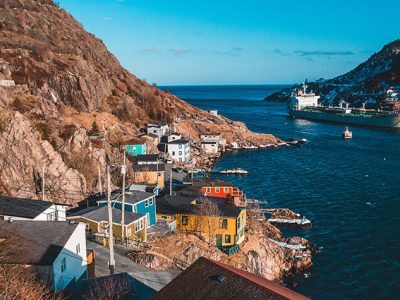Canada’s youngest and easternmost province will welcome over 1,700 immigrants — the immigration target will be surpassed three years earlier than expected.
This year, Newfoundland and Labrador will surpass the immigration target for 2022. Two years after the launch of its provincial immigration program, this Maritime province is overloaded with applications from foreigners who wish to settle here. It seems that Newfoundland and Labrador will welcome over 1,700 immigrants three years earlier than expected.
In 2017, the provincial government of Newfoundland and Labrador announced that they would welcome 50% more immigrants per year by 2022. This calculation is based on the immigration level of 2015 when 1,122 permanent residence permits were issued. It means that the province would need to attract 600 more immigrants to achieve the target.
“That 1,700 was, I guess, a lofty goal when we started,” said a Newfoundland and Labrador’s representative. “We anticipate by the end of this fiscal year we should be surpassing (our goal) quite substantially.”
The number of applications to Newfoundland and Labrador doubled from 2018 to 2019. This increase was the result of a provincial five-year immigration strategy coupled with the Atlantic Immigration Pilot since both of these initiatives were launched in 2017.
On the other hand, an excess of applications means a lag in processing time — since the end of May, the time to process applications has doubled compared to the standard processing time. And there are just five immigration officers in the province.
To deal with the influx of immigrants, the government is planning to overview its five-year immigration strategy. More information about it will be published later this year.
The main priority is not so much attracting new immigrant as retaining them in the province. According to Statistics Canada, over the period from 2011 to 2016, out of immigrants who arrived in Newfoundland and Labrador only half remained in the province.
The province is counting on immigration to reduce the population decline, which today stands at around 525,000. According to Statistics Canada forecasts, without immigrants, the working-age population of the province by 2025 will decrease by 10%.
About Newfoundland and Labrador
Newfoundland and Labrador is the youngest Canadian province to join the Confederation in 1949. The Royal St. John’s Regatta is a Newfoundland and Labrador official holiday, which is held every year on the first Wednesday of August. Many people gather in the provincial capital St. John’s to watch boat races and chat with each other.
St. John’s has the largest number of bars per capita — more than in any other major Canadian city. The main industries in the province include oil exploration and production, as well as tourism.

